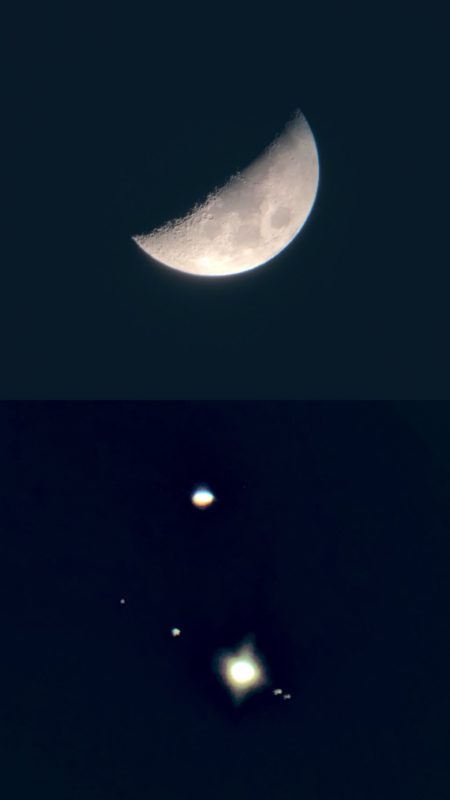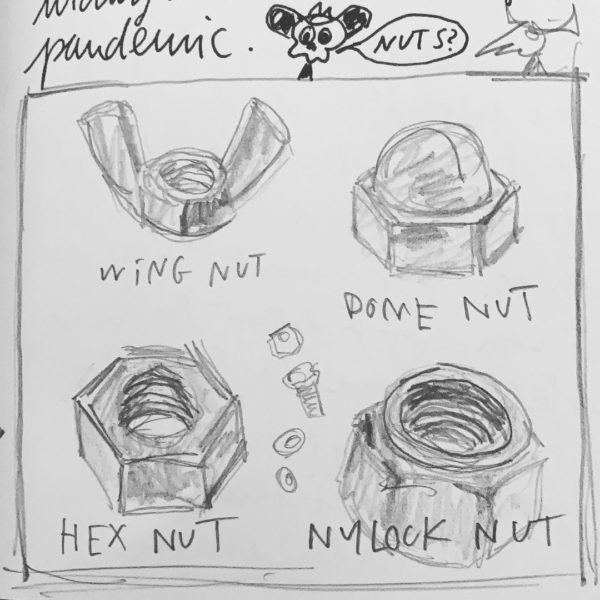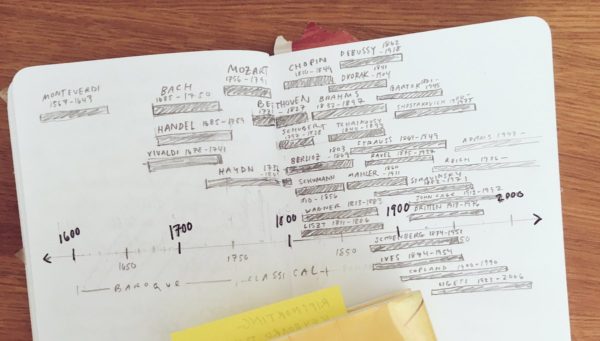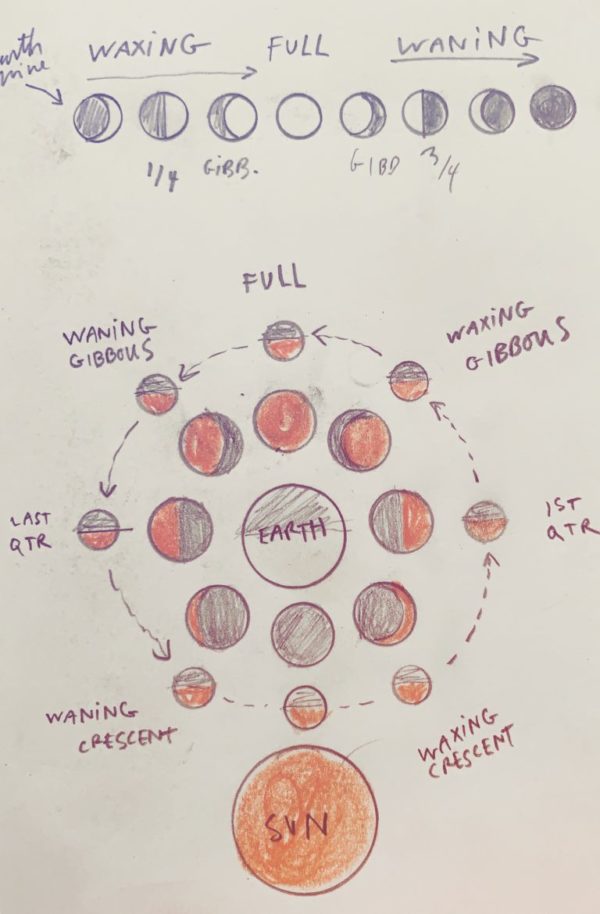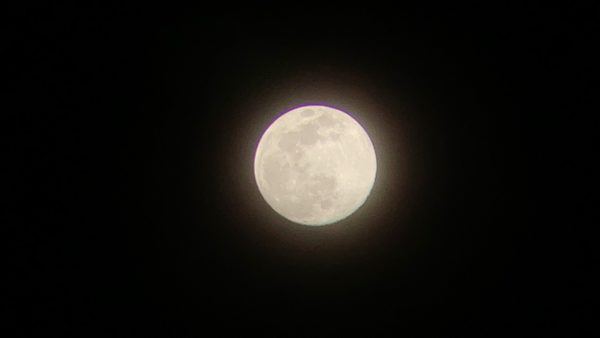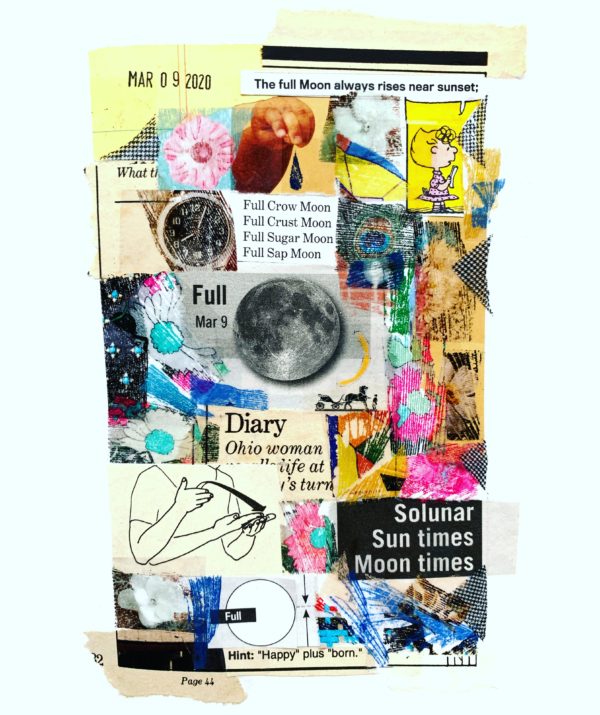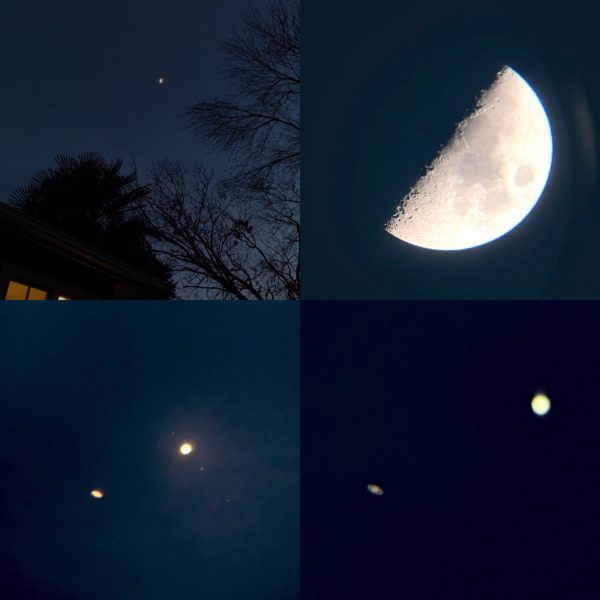
Here are some photos I took Monday night of a great conjunction. (Saturn and Jupiter haven’t been this close and observable in the night sky for about 800 years.) I did not expect to get them due to the heavy clouds on the horizon, so it was a bit of a solstice miracle.
Asshole clouds
— Austin Kleon (@austinkleon) December 22, 2020
I anticipated cloudy skies, so I didn’t bother driving outside the city. Even more incredible is that I actually caught it between the branches of this tree in our backyard:
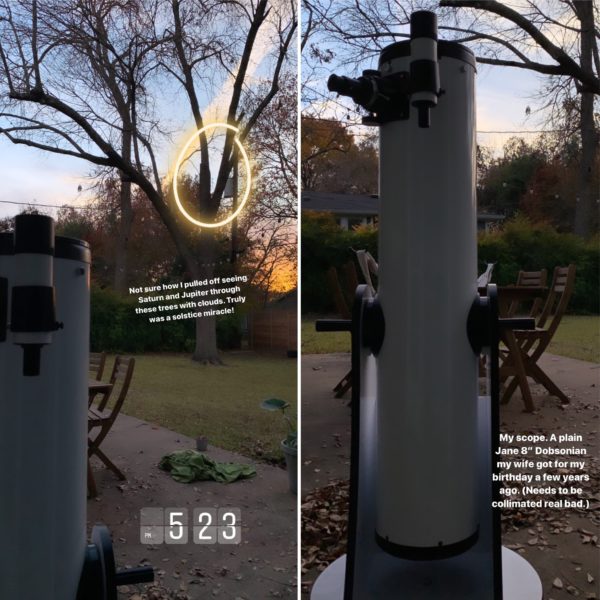
This is one of the many nice things about Texas in the winter — the leaves are off the trees, the sky is often clear, and the temperature is pretty mild after sunset.
If you didn’t catch it last night, never fear, you still might be able to catch Saturn and Jupiter in the same eyepiece, depending on where you are — I took these photos on Sunday night. (The first time my wife got to see Saturn’s rings with her own eyes — her reaction made my week!)
What’s so special about seeing it with your own eyes?
In Sourdough, Robin Sloan wrote, “It’s always new and astonishing when it’s yours. Infatuation; sex; card tricks.” In his latest newsletter, he says we can add “seeing the pinprick Galilean moons for the first time with your naked eye.”
This is old science, old magic; it remains astonishing.
The key, for me, is the unbroken line of light. If my telescope was some kind of digital device with an image sensor and a high-resolution display, the view would be interesting, but it wouldn’t be astonishing, because the astonishment is: that these photons erupted out of the sun, leapt across the solar system, bounced off those moons—those worlds—then crossed the chasm back to Earth and caromed between two mirrors to strike some cells waiting in the back of my eyeball. A direct link; a silver thread.
And, just as astonishing: there are enough photons for all of us.
